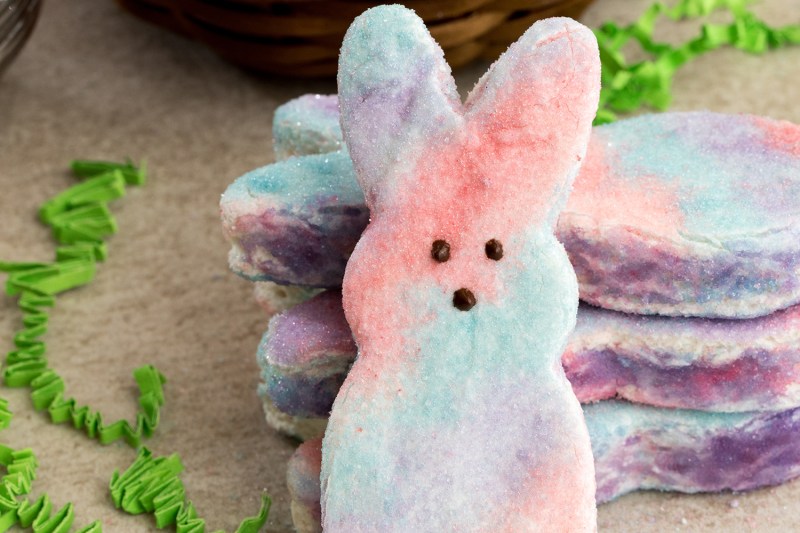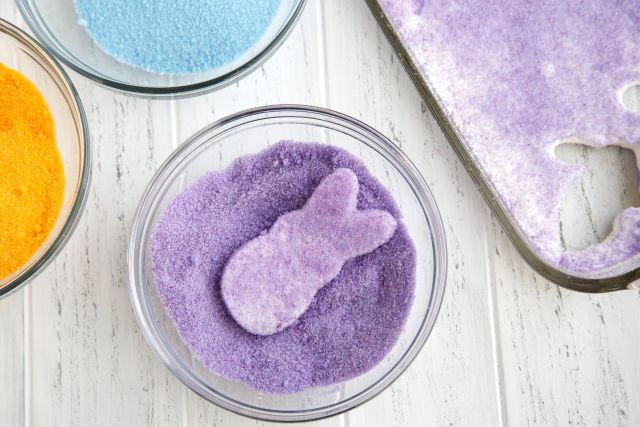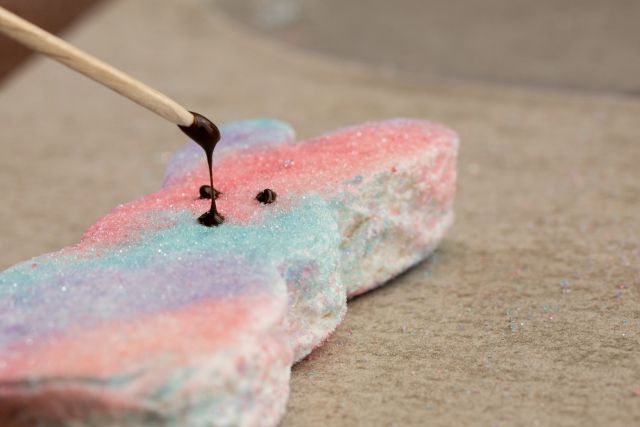
Marshmallow candies are as much a hallmark of the Easter holiday as chocolate, ham, and drinking Champagne until your burps come out speaking French. Of course, you can always go out and buy the beloved Easter marshmallows we all know and love, but making your own at home is actually a really fun activity for the holiday, especially if you have little ones at home.
We absolutely love this recipe from McCormick. Learn how to make marshmallows this Easter.
Easter marshmallow recipe

Ingredients:
For colored sugar:
- 1 cup granulated sugar
- McCormick Assorted NEON! Food Colors & Egg Dye
For marshmallows:
- 2 cups granulated sugar
- 1 cup cold water, divided
- .5 cup light corn syrup
- 2 envelopes (.25 oz each) unflavored gelatin
- 1 tablespoon McCormick Pure Vanilla Extract
Method:
For the colored sugar:
- Place sugar in a large resealable plastic bag. Select your desired Marshmallow Variation in the tips section below and add the designated amount of Food Color with the sugar.
- Seal the bag and knead gently until the color is evenly distributed.
- Spread colored sugar in a thin layer on a large rimmed baking sheet and break up any large lumps. Allow to dry thoroughly, about 15 to 20 minutes.
- Sift or press through the sieve, if needed. Spray 13 x 9-inch baking dish with no-stick cooking spray then coat with some of the colored sugar. Set aside.
For the marshmallows:
- Microwave .5 cup of the water, sugar, and corn syrup in a medium microwavable bowl on high for 7 minutes. Stir to dissolve sugar.
- Microwave on high for 5 minutes longer. (Mixture will have a slight yellow tint.) Carefully remove the hot bowl from the microwave.
- Place the remaining .5 cup water in a large mixer bowl. Sprinkle with gelatin. Let stand 5 minutes.
- Gradually beat in hot syrup mixture with a whisk attachment on medium-low speed. Beat 8 minutes. Increase speed to medium-high.
- Beat 10 to 12 minutes longer or until the mixture is fluffy, shiny, and has at least tripled in volume. Beat in vanilla.
- Spread marshmallow mixture in the prepared dish. Smooth top with a spatula. Sprinkle some more of the colored sugar on top to coat. Let stand at room temperature overnight or refrigerate for at least 3 hours.
- Reserve the remaining colored sugar in a large resealable plastic bag or airtight container.
- Cut marshmallows with 1- to 2-inch Easter cookie cutters. Add marshmallows in batches to reserved colored sugar in the bag; toss to coat well. Shake off excess. Store marshmallows in an airtight container at room temperature for up to 3 days.
For marshmallow color variations:
- Pink: For the colored sugar, add 10 drops of pink color with the sugar.
- Purple: For the colored sugar, add 5 drops purple color and 8 drops blue color with the sugar.
- Blue: For the colored sugar, add 15 drops of blue color with the sugar.

Note: To prepare marshmallows as seen in the photo, prepare the baking dish as directed, sprinkling the pink, purple, and blue colored sugars in stripes in the bottom of the dish. Prepare marshmallows as directed. Decorate the top of the marshmallows with stripes similar to the bottom. Cut into bunny shapes and sprinkle sides with remaining sugar. Melt chocolate chips as directed on the package and use to paint or pipe on the bunny face, if desired.
To prepare Colored Sugar using McCormick Nature’s Inspiration Food Colors, add .25 teaspoon desired color and 1 teaspoon water to sugar. Continue as directed.
Editors' Recommendations
- How to brunch like the French with lobster croissant and champagne
- Your guide to the pescatarian diet for healthier living
- How to make the perfect carnitas, according to a chef
- How to reverse sear for a flawless steak every time
- Don’t make this super common mistake when chilling wine in an ice bucket






